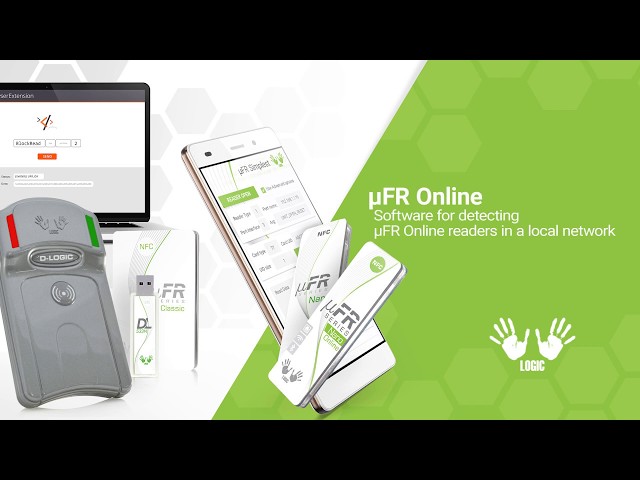
How NFC Readers Can Help Your Business
NFC Readers are used for payments, identification and access control. They provide convenience and are a secure way to track who is in your building.
When an NFC-enabled smartphone gets close to the reader, a magnetic field is created through the copper coil and the microchip is powered on. The NFC tag transmits data to the device in less than a second.
What is NFC?
NFC is a short-range wireless technology that allows devices to communicate with one another when they are in close proximity. It powers contactless payments through mobile wallets and the contactless cards you might use at the grocery store, but it also offers a variety of other uses for businesses.
NFC Readers are designed to communicate with electronic tags, commonly called NFC Tags, which contain the information that is shared between devices. These tags can be either passive, requiring an active device (like your phone) to read its data, or NFC Readers they can be writable and allow for communication between two devices.
Passive NFC tags can store a variety of data including debit and credit card information, loyalty program membership details, PINs, and networking contacts. NFC Tags can be custom-encoded by their manufacturers or can use standardized data formats such as NDEF.
NFC is used in many industries because it’s simple to implement, improves efficiency, and provides additional security for your business. Using NFC Access Control allows you to track who is entering and exiting your building, which is great for improving your business’s security and helping employees stay safe while on the job. Streamlining your operations with NFC can help reduce the time per transaction, which can make your customers happier and more loyal to your brand. In addition, NFC can offer other benefits for your company that can help increase productivity and improve profitability.
NFC Payments
If you’ve ever tried to use a contactless payment card at an NFC reader and were unsuccessful (maybe because your hands were full or the chip was too far away), it’s because NFC technology requires the chips to be within just a few centimeters of each other to transfer data.
NFC-enabled devices like smartphones and smartwatches send out a signal that looks for a compatible device to transmit a transaction to. A compatible NFC reader then picks up that signal and begins processing the transaction. NFC payments are encrypted during the transmission process so your customers’ sensitive credit card information is safe and secure.
Many mobile NFC payment solutions like Apple Pay and Google Pay also offer tokenization for heightened security. This means that instead of transmitting the actual credit card number, NFC transactions send a unique, encrypted token that represents the user’s payment information and is useless if intercepted by malicious parties.
NFC is a great option for businesses that want to offer their NFC Readers customers a convenient, fast, and secure alternative to credit cards and cash. Check with your merchant account provider to see if your existing POS system can accept NFC payments and what the rates are for doing so.
NFC Identification
NFC readers allow you to quickly scan and collect information from an object, such as a product or label. This data can include the manufacturer, product description, production date, sales channel and other details. This information can then be used to connect with a mobile app that can display more detailed information or trigger other actions on the phone, such as sending an email or opening a website.
NFC can be used to engage consumers in a variety of ways, boosting customer experience and conversion rates. For example, a restaurant can use NFC to let customers order their favorite dish with a tap of their smartphone. Or, an escape room can set up NFC tags to activate automation in a sequence. These tags can trigger a door to open, or reveal a clue in the game.
NFC also offers a convenient way to verify identity. Many ID documents contain RFID chips that can communicate with NFC devices. This allows NFC-enabled phones to check the data on those chips and authenticate a person’s identity. NFC is just one of the steps that businesses must take to ensure compliance with anti-money laundering regulations. Request a demo today to see how Sumsub’s NFC-based verification can make your AML processes even stronger.
NFC Access Control
In cutting-edge NFC access control applications, smartphone credentials replace physical badges, keys or fobs. Whenever a mobile device comes within range of an NFC reader, the app installed on the phone acts as the credential and initiates the data transfer that authenticates the user’s permission to enter the building or access specific resources. This allows a company to eliminate costly badges, reduce overhead costs associated with managing and replacing them, and streamline the process of granting access.
NFC readers emit a radio wave that energizes passive tags, such as those found in most smartphones and some public transport card readers and touch payment terminals. They can then send a data signal, which contains a unique identifying code. A connected access panel then compares this information to the occupant database and either authorizes or denies the individual’s entry.
This type of bidirectional communication makes NFC systems more secure than RFID systems, as the data transferred from a tag to a reader is encrypted and used only once. This can help mitigate security risks, including those associated with cloning. NFC systems also have the added benefit of requiring that tenants use their own devices to gain access, which eliminates the risk of losing or misplacing a card or key. This is especially important for large facilities where the number of employees can easily exceed a hundred.
